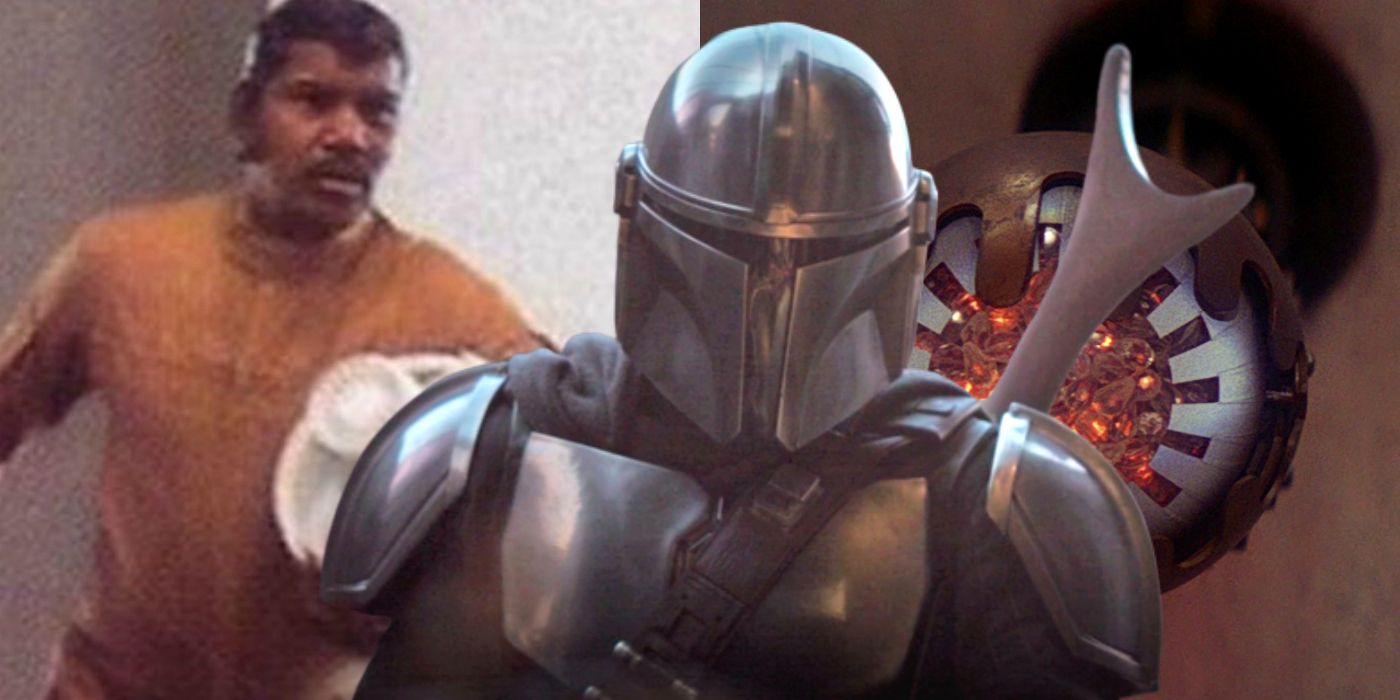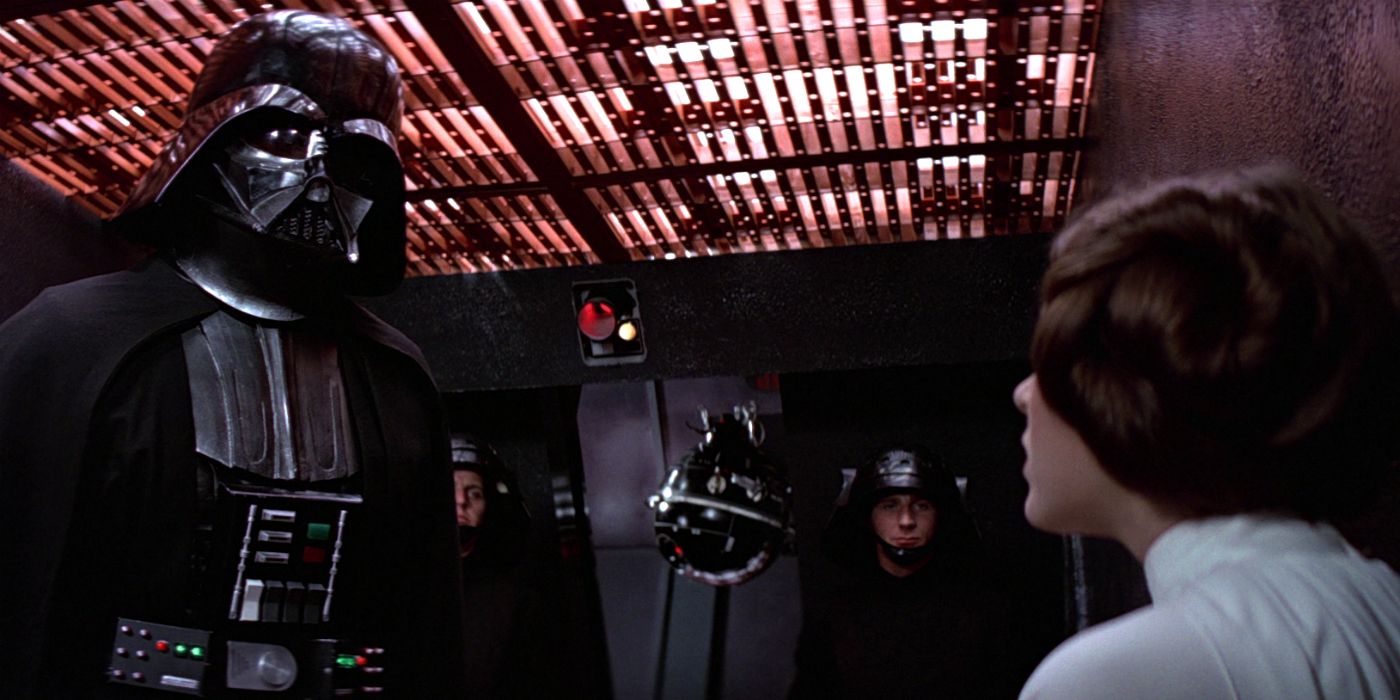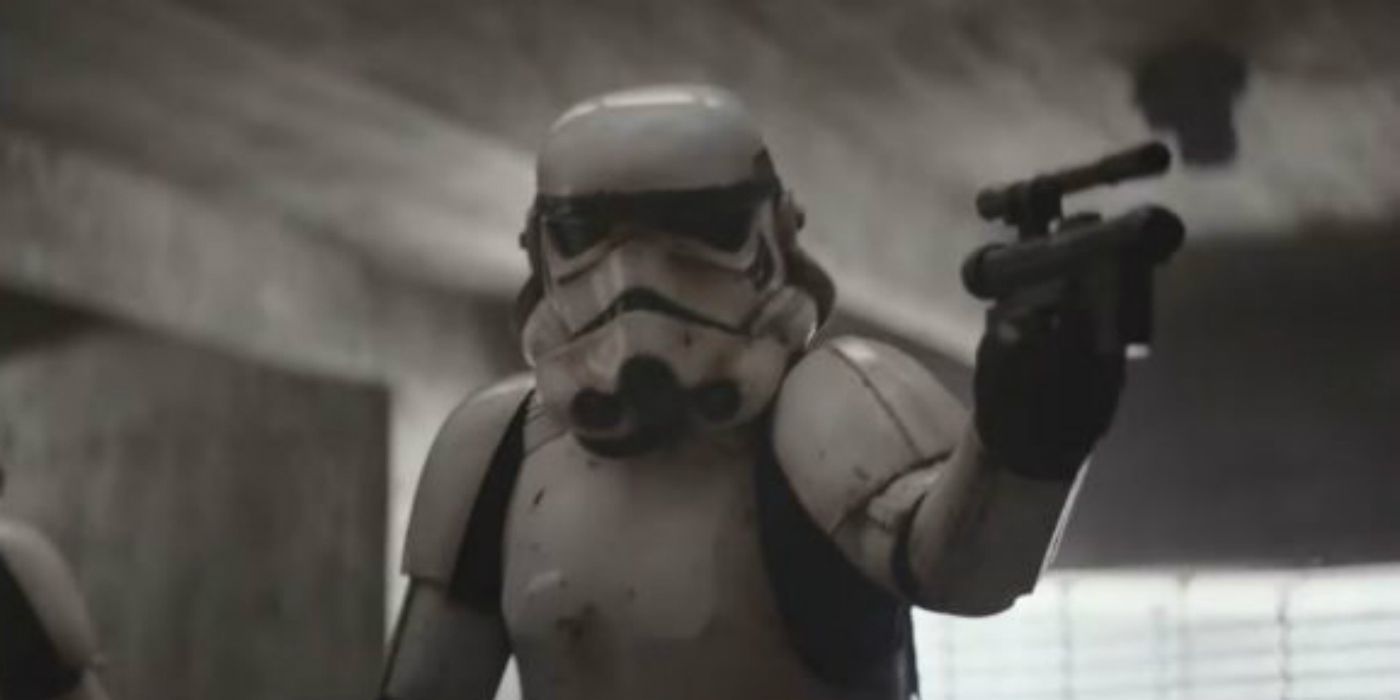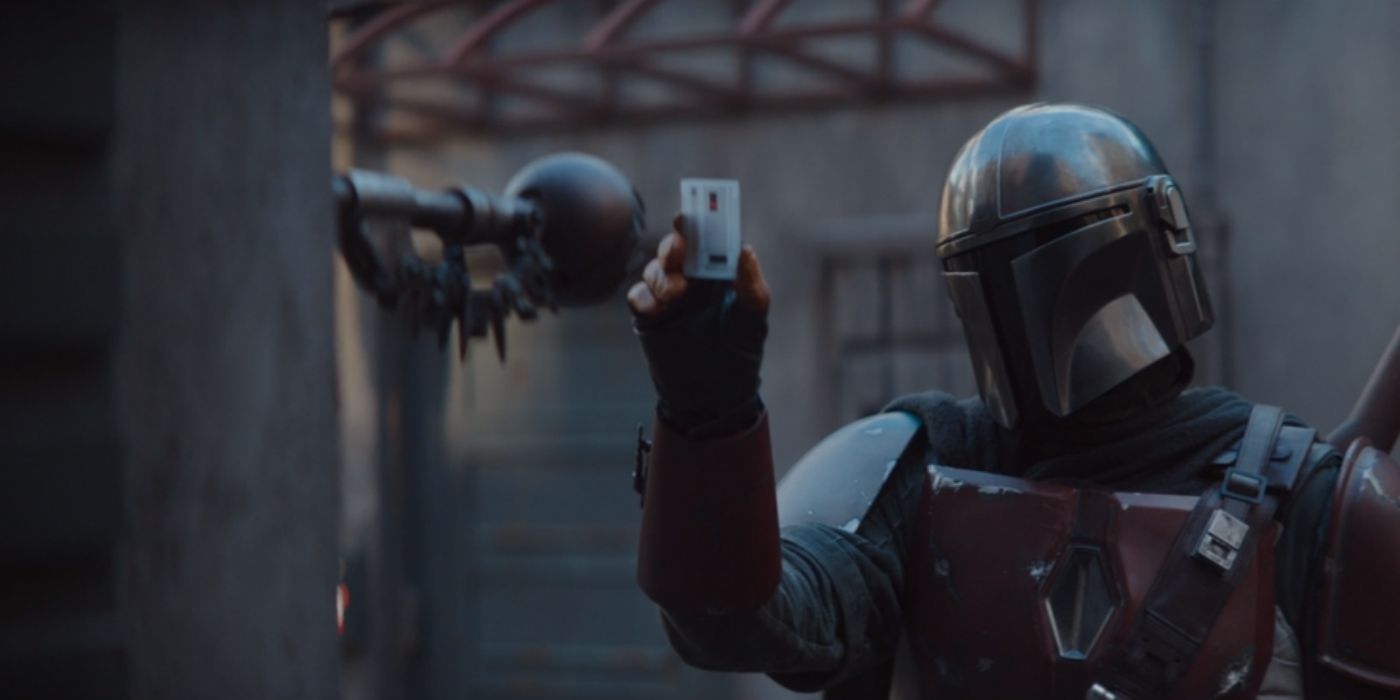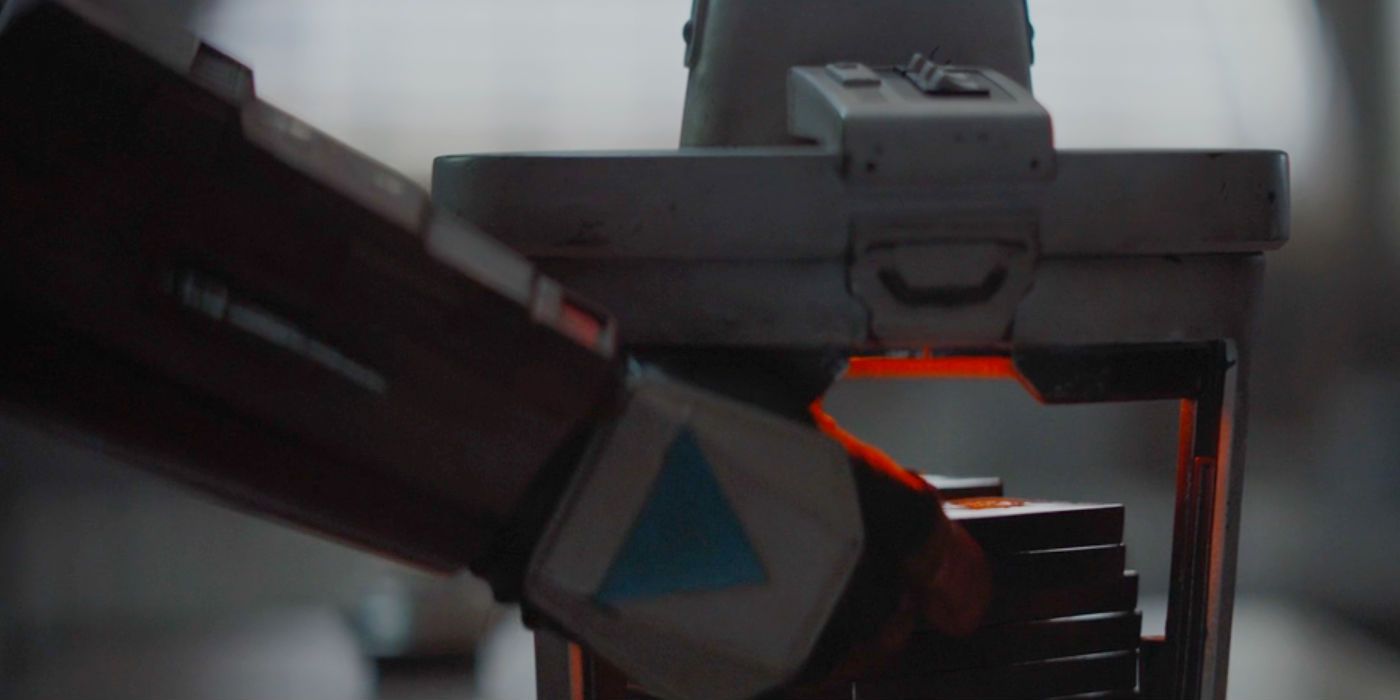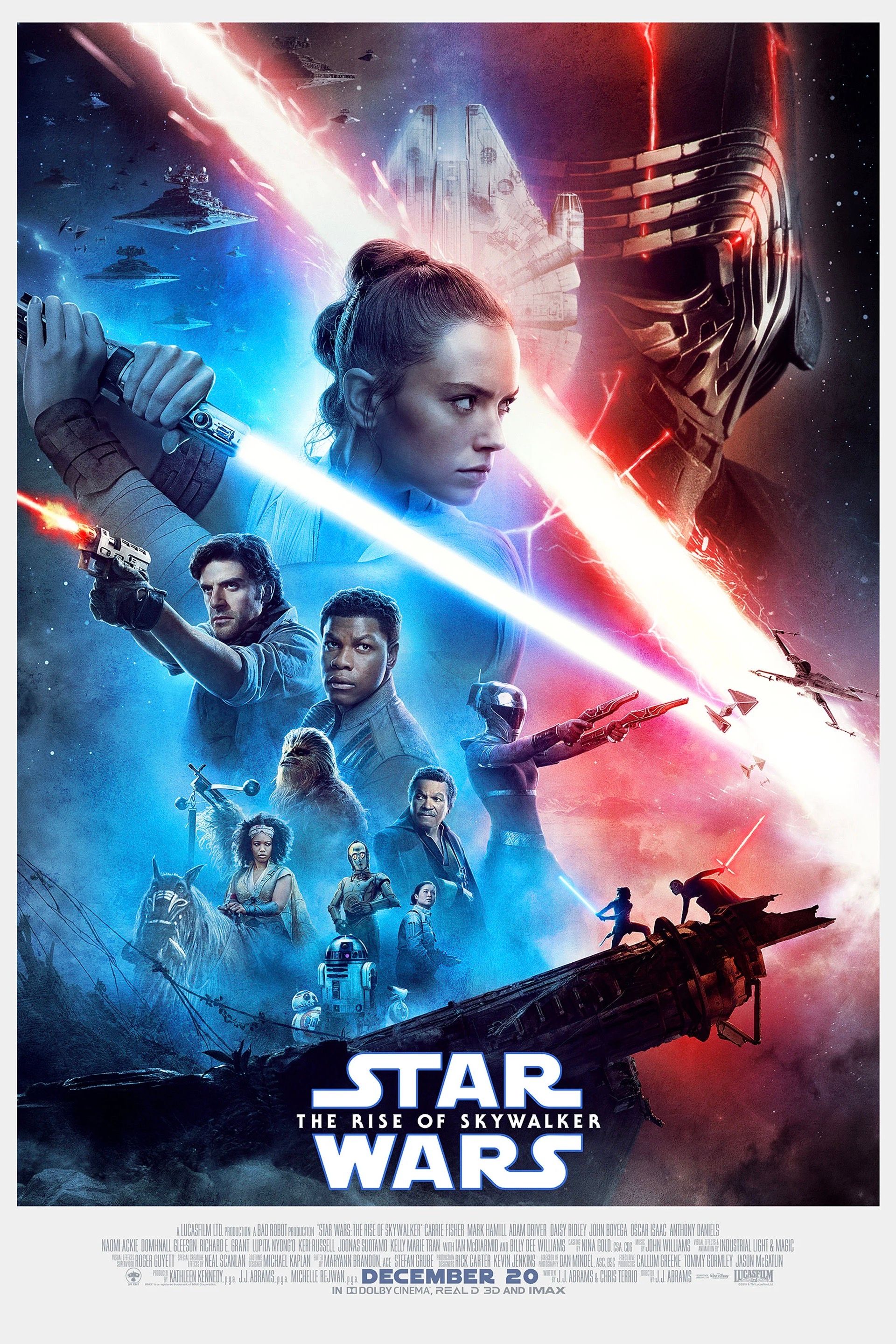The third episode of The Mandalorian explains confusing aspects of the technology introduced in the original Star Wars trilogy. The first three Star Wars movies were so packed with alien planets, different species, all sorts of weapons, and new concepts, that the films didn't have time to explain the purpose of everything that they included.
The Mandalorian is helping with that. The first live-action Star Wars TV series debuted with the launch of Disney's new streaming service, Disney+. Set five years after Return of the Jedi brought the defeat of Emperor Palpatine and the fall of the Galactic Empire, The Mandalorian follows the exploits of a lone bounty hunter from Mandalore in the outer reaches of the galaxy. Nicknamed "Mando" and played by Pedro Pascal, the main protagonist follows the tradition of the first character to wear the famous Mandalorian armor, the original Star Wars trilogy's Boba Fett, by never taking off his helmet. But unlike Boba Fett, Mando is an actual Mandalorian.
One of the ways that The Mandalorian is building onto the live-action Star Wars universe is by diving deeper into previously unseen corners of its world. The third episode of the Star Wars spinoff, titled "The Sin", shows viewers a close look at Mandalorian culture when Mando visits members of his own race who discuss their past, principles, and opinions about Mando's decision to work for people associated with the Empire. While the Disney+ series is indeed educating its viewers on the ways of the Mandalorians, it's also explaining other vague and misunderstood aspects of the Star Wars universe, particularly its technology. In just its third episode alone, The Mandalorian has cleared up questions about four different pieces of tech from the first three Star Wars movies.
Interrogation Droid From A New Hope
Princess Leia's story in 1977's A New Hope started with the character being a prisoner of the Empire. Since she had valuable information about the Rebels, Darth Vader used an interrogation droid called the IT-O to help get the answers he needed from Leia. While being put under a mind probe, Leia was injected with a hallucinogen that made her believe she was in great pain. The drug was administered by the IT-O model.
The Mandalorian shows that its function goes beyond what was suggested in A New Hope. The IT-O model is in the room with Baby Yoda when Mando charges into the room and threatens Dr. Pershing (Omid Abtahi). At first, Mando believes that Dr. Pershing is hurting Baby Yoda, but Dr. Pershing explains that instead he was actually keeping Baby Yoda alive. The IT-O droid -- which Mando promptly destroyed -- was providing medicine for the creature. It also may have been what was extracting the samples mentioned by the Client (Werner Herzog) in an earlier scene. This indicates that the IT-O models are much more than interrogation droids. They can also serve medical needs.
Stormtrooper Blaster Design From Original Star Wars Trilogy
Blaster rifles, among other iconic Star Wars weapons, are a key part of Star Wars lore, as they appear in various forms of media, including Star Wars comics, video games, and cartoons. For this reason, understanding their design is important to fans. When Mando makes his fateful decision to go against the Client, he heads into the base where Baby Yoda is being held and attacks the Stormtroopers. In one scene, two Stormtroopers are unable to find the Mandalorian, so they switch on flashlights on their blaster rifles. The addition of lights on the Stormtroopers' blaster rifles explains why the guns are built that way. Not all the parts on the blasters had obvious purposes, but The Mandalorian has showed audiences one more of its functions.
The Gatekeeper Droid From Return Of The Jedi
In 1983's Return of the Jedi, Jabba the Hutt had a TT-8L/Y7 droid installed outside his home on Tatooine. Shaped like an eyeball, the droid extends out of a wall and examines anyone who approaches. Often referred to by the nickname, "tattletale droid", the TT-8L/Y7 is designed as a gatekeeper that can let it owner known when someone arrives at the entrance of its base, or keep out unwanted visitors. That's the purpose it served in Return of the Jedi when R2-D2 and C-3PO tried to get inside Jabba's palace. C-3PO even engaged in an argument with it, but it was to no avail, and the droid refused to allow them entrance.
Mando has an encounter of his own with one of the droids in episode 3 of The Mandalorian. When visiting the Client to hand over Baby Yoda and accept his payment, a TT-8L/Y7 protrudes from the wall and looks at him. Mando holds up an identification card, which is quickly scanned by the droid. Afterward, Mando is permitted to enter. Apparently, after scanning an object that identifies the visitor, the droid decides whether or not the person can enter the premises. What Mando showed the droid may be what it expected from C-3PO in Return of the Jedi.
Ice Cream Maker From Empire Strikes Back
In The Empire Strikes Back, a minor character named Willrow Hood was trying to evacuate Cloud City after the Galactic Empire had invaded. During this scene, Willrow Hood was spotted making off with a device that oddly resembled an ice cream maker. Star Wars fans have never understood why he was carrying it, but the moment has become the subject of a number of jokes and memes, considering the strange shape of the item he was holding.
Both a name and a practical purpose is assigned to the object in The Mandalorian. The "camtono" is a storage device designed to protect valuables. The camtono is handed to Mando as his reward for bringing in Baby Yoda. In the case of The Mandalorian, it's used to hold large amounts of Beskar stamped with the Imperial seal. It's a rather simple explanation, but nevertheless it solves a mystery that has lingered since 1980.

